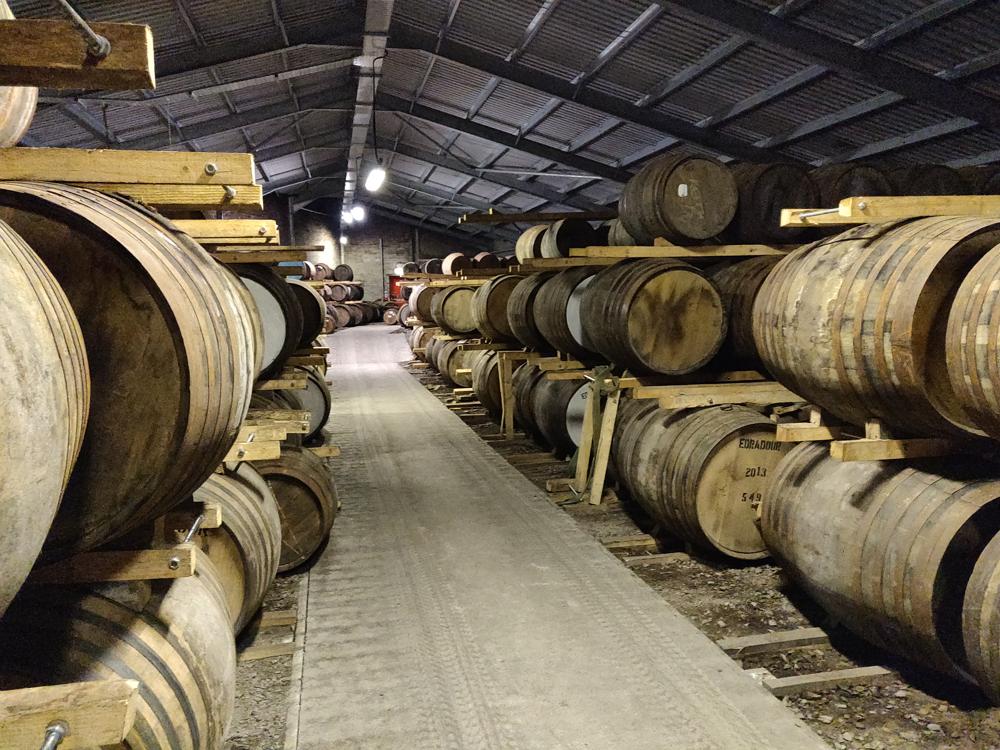Sulpher in Whisky
Published August 6, 2020
Contents

Sulphur is a controvertial topic within the whisky industry, and a number of high profile characters, including the man with the hat have waded in. Unfortunaly this has often served the purpose of confusing the matter rather than clearing it up.
It should be understood that whiskey always has, and always will contain sulfur compounds. Sometimes its concentration is so low that it does not reach the odor thresholdand thus cannot be perceived. Therefore it’s not so much a question of whether whisky contains sulfur, but what type, and how concernated it is, and to a lesser extent where sulpher enters into the whisky
How does sulphur get into whisky
Sulphur enters the whisky process through the casks used, the drying of barley and the chemical changes which create alcohol. Three types of sulphur can be found in whisky
- Sulfur dioxide
- Hydrogen sulfide
- Dimethyl trisulfide (DMTS)
##Sulfur dioxide The most common sulfur compound in the manufacture of whisky is sulfur dioxide. However hardly any measurable, let alone significant amount of this is found within whisky. While it plays a crucial role in various manufacturing processes, used to sulphurise casks, being found within the peat smoke used for drying barley etc. Happily these compounds are extracted through interaction with the copper stills and condensors being extracted as copper sulfate. A substance that is believed to be partly responsible for the metallic taste of a New Makes.
Hydrogen sulfide
To convert the sugar into alcohol, the yeast cell needs an accelerator or trigger, called a catalyst in chemistry. In this case it is a biocatalyst that is nothing other than an enzyme (enzymes belong to the group of substances called proteins). Without these enzymes, the fermentation process does not occur at all, or would take place very slowly. These enzymes must be available in sufficient quantities and are produced by the yeast cell with the help of nitrogen.
In the event that sufficient nitrogen is not available, other chemical processes take place that produce hydrogen sulfide and acetic acid esters, both of which cause a foul odor. These two compounds, which have a strong negative impact on smell and taste, are also formed when the fermentation process proceeds too slowly. For those not yet acquainted hydrogen sulfide is the smell of rotting eggs, or stink bombs. Unsurprisingly these are not tastes distillers are aiming to create in a fine single malt. Happily these seldom make it through the distillation process.
Dimethyl trisulfide
Dimethyl trisulfide or DMTS are natural byproducts of the brewing process, and identified as the main culprit behind “sulfury and meaty aromas” within whiskies such as Mortlach. Typical tasting notes are:
- Burned matches
- Rubber
- Meat soup/stew
- Rotten vegetables DMTS is far less prevelant in whiskies made on taller stills, or on those opting for shell and tube condensors as opposed to worm tubs. For this reason whislies with the ‘correct’ amount of DMTS are prized by some for their funky notes.
Why Are Sulphur Candles Used In The Whisky Industry?
Sulfur candles are used to reduce the oxygen content in an empty barrel and to prevent the growth of bacteria and mold through the formation of sulfur dioxide. While we’re not aware of any Scotch distilleries that use sulphur candles in their barrels to prevent mold from formingthese are common within the wine and sherry industry. As these wine and sherry casks are prized by countless malt distilleries in Scotland sulfur candles also have an impact on your whiskey.
Barrels of the sherry industry had months to years to soak up liqueur wine during storage. There are therefore numerous aroma and sugar molecules on their staves. A festival for every for of mould. If the barrels are left empty for a long time, such as on their way to Scotland - there is a risk that those fungi or bacteria will spread rapidly rendering the expensive barrel unusable. For this reason, some wine and sherry producers ignite small sulfur candles in their barrels and “sulphurise” them.
How is Sulfpher Extracted From Whisky?
Sulphur is removed from the whisky production in two key ways, the use of copper stills which interact with the sulpher, and whisky casks which remove any problematic sulphers that survive distillation.
How Do Copper Stills Reduce Sulphur?
Pot stills are made of copper for three reasons;
- Copper is easily maliable
- Being metal copper is an excellent heat conducter
- Copper interacts with, and removed sulphur
Stainless steel and copper are both excellent heat conductors, and easily malliabkle but copper has the advantage over stainless as the copper reacts on a molecular level with the sulfurs. It is thanks to thse chemical changes that connections such as DMTS are being greatly reduced.
On the one hand, that metal accelerates the conversion of those molecules into other sulfur compounds, and on the other, it combies with these tp create new compounds such as copper sulfate. Unfortunately this is one of the areas that results in the greatest wear of the copper. It was for the reason of this thining and weakening, paired with coal fire heating systems that fires and explosions were less common occurence and more fact of life throughout the history of most older distilleries.
How Do Whisky Casks Reduce Sulphur?
Oak Casks not only provide 60% to 70% of the aromas in a whiskey, but thanks to their the activated charcoal layer ensure that various substances are broken down. While most organic sulphur compounds such as dimethyl disulfide (DMS) decrease gradually during aging, in part due to oxidisation, evaporation and chemical reactions with the carbon layer of the charred cask which can actually transform these into other far more enjoyable flavour compounds.
Previous
Next

